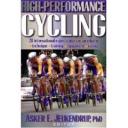High-Performance Cycling – a book review.
It is written/edited by someone with a PhD, in a reporting style which may annoy some people. It is well-referenced, though I think most people will not care less for seeking out the various journal articles. For example, it often starts a paragraph in this manner: «one study shows that…»
A quote: «Our baseline modeling condition has used a coefficient of rolling resistance (Crr) value of 0.0032, which is representative of an average racing clincher tire (Martin et al. 1998). Kyle (1986) has reported the Crr for high-performance road-racing tubular and clincher tires to be 16 percent lower (0.0027) when measured on an asphalt surface. Some road-racing tubular tires, however, exhibit Crr values as high as 0.0059 (Kyle 1986).
Now what is the point of that? The findings (on whether tubulars or clinchers offer lower rolling resistance) seem to be inconclusive. It doesn’t tell us which brand + model tubulars had the higher rolling resistance, so you’d have to look up the article by Kyle if you really wanted to know which tubulars to avoid. At the very least it can be gleaned that the chapter concerning equipment isn’t much help.
This book creates a very small niche for itself, perhaps too small. It seems to be aimed at coaches or deadly serious cyclists. I can’t imagine there are too many of those in the world. But if that is the case, why bother defining the terms «prologue», «criterium» and «stage race»?
I’ll be honest -I haven’t read the entire book- but I still didn’t find the three chapters on body and machine very useful, nor the chapters covering performance assessment. The nutrition & recovery sections were of assistance, as was the chapter on training in extreme conditions (for me at least).
However, I was disappointed that two very important «tips» were not mentioned regarding training in extremely hot climates, namely: avoid black or dark clothes, as they absorb a LOT of heat; and consume icey cold fluids as they are absorbed into the body faster than tepid fluids. Furthermore, although hypothermia was discussed, there was no mention of the dangerous condition that may arise if extremely frigid air is rapidly inhaled by athletes – the trachea (i.e. your windpipe or whatever) freezes. Absolutely no mention of this, in a book that purports to discuss training in extreme climates!! (…)>I just can’t imagine that a large proportion of the considerable number of amazon customers (229,000+) of this book own their own hypobaric chambers (or else would have the time and money to train and live at separate altitudes), so I can’t fathom how the chapter on altitude training is going to be beneficial to the majority of readers.
On the up side, the book contains many helpful graphs and tables throughout, and the end of each chapter also contains brief summaries.
I didn’t buy this book to be able to improve at competition, I bought it to become a better cyclist. My advice, for what its worth: if you’re not a scientist with a PhD like I’ve got, and you don’t intend on reading a thesis to get some pointers, don’t buy this book! Don’t get me wrong, it is a helpful book (in its own way) I just think it could be a little more palatable for the average reader.






Discussion Area - Leave a Comment